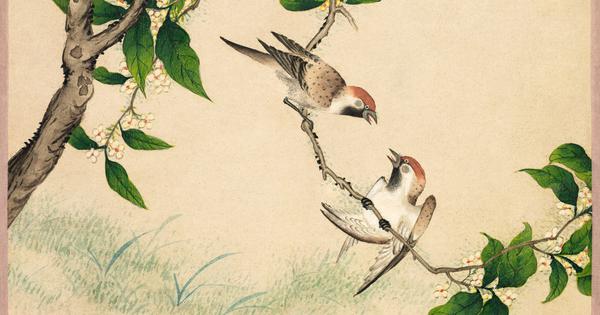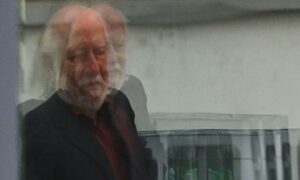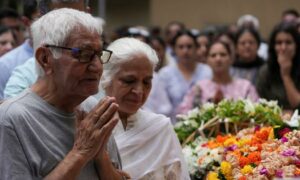
Birds have been on my brain for some time, for several reasons. Some months ago, my wife Chryselle introduced me to the Merlin Bird app available for free on the phone. It “offers quick identification help for all levels of bird watchers and outdoor enthusiasts to help you learn about the birds in any country in the world.”
Since then, we’ve compiled an impressive list of bird calls heard from various vantage points in our house. They range from the commonplace (house sparrow; common myna; crows for some reason don’t get picked up) to the more exciting, at least to an amateur birder like me: red-whiskered bulbul; red-vented bulbul; jungle myna; Asian koel; purple-rumped sunbird; common tailorbird; pale-billed flowerpecker; fantail flycatcher.
We were surprised to catch bird calls even of Indian peafowl, spotted owlet and Eastern barn owl, all within earshot of our home, in the heart of Panjim in Goa.
Whether it means that bird life is still alive and well in the city, or whether it means they’ve had to adapt to destruction of their former habitat is hard for me to speculate. But it is still comforting to hear our winged friends amid the din and bustle of the Casino Sin City my beloved Panjim has degenerated to. They give hope and cheer me up.
I have science to back me up. A 2017 book Ecology and Conservation of Birds in Urban Environments asserts that “bird diversity improves the well-being of city residents”. It elaborates, “If interaction with birds truly increases quality of life, then this value should be considered in the planning of sustainable cities. Both conservation and proper management of existing urban green areas are needed to increase possibilities to encounter many bird species.”
The other bird connection has been musical and poetic. I’ve been following the BBC Proms 2025 season on internet radio. On August 5, the concert (“Great British classics”, with the BBC National Orchestra of Wales and the BBC Singers under the baton of the energetic Turkish-Italian female conductor Nil Venditti) featured two bird-themed works.
The first one was pretty straightforward, a concert favourite with British audiences: The Lark Ascending, a ravishing work for solo violin (here played by Bulgarian-born, Paris-based Liya Petrova) and orchestra by English composer Ralph Vaughan Williams (1871-1958) inspired by the eponymous 1881 poem by George Meredith (1828-1909).
The 122-line poem begs to be set to music, but it is also already musical when recited aloud. Here’s just a sample: “He rises and begins to round, He drops the silver chain of sound Of many links without a break, In chirrup, whistle, slur and shake.”
There are other musical allusions, “a press of hurried notes”;”changingly the trills repeat,” “Sweet to the quick o’ the ear,” a song of light,” “simple singing of delight” and even puns: “quavering up the chord.”
Vaughan Williams finished his composition after World War I, which gives it not only a pastoral air evoking the lark in free flight, but also a nostalgia for a bygone era. The so-called war to end all war (how naïve can humankind be!) had changed everything forever.
The other work was a BBC commission, a world premiere, of Bird Songs, by contemporary English composer John Rutter, beloved for his choral music. I particularly loved singing his Donkey Carol and Shepherd’s Pipe Carol in St. Augustine’s choir High Wycombe at Christmastime.
Rutter poetically called birds “our unpaid songsters”, a description that will stay with me. Bird Songs is a setting of four bird-themed poems, alternatingly light-heated and profound.
The text of “That’s What We’d Do (If You Were an Owl and I Were an Owl)”, a humorous poem by Mary Mapes Dodge, a flirtatious conversation between a courting couple is orchestrated jauntily by Rutter, a guaranteed mood-lifter.
Il Bianco et Dolce Cigno (The sweet white swan) is a setting of a 1539 Italian madrigal. Swans are dear to Rutter after a friendship he’s made with “a family of swans” near his home, particularly Rufus, who sometimes visits his kitchen for “a morning snack.” Swans however are associated in the arts with thoughts of death, and this Italian “swan song” is no different.
Rutter dispels the gloom with his setting of Answer to a Child’s Question ‘What Do the Birds Say? by Samuel Coleridge Taylor (1772-1834), founder of the Romantic movement in England. In a connect with the earlier work in the concert, the child’s question is answered by the lark, “so brimful of gladness and love”, “he sings and he sings and forever sings he – ‘I love my Love, and my Love loves me!’”
Rutter ends with the wellspring poem of light, Hope is the Thing with Feathers by American poet Emily Dickinson (1830-1896).
Dickinson’s powerful three-stanza poem, deceptively childlike in its simplicity, uses the metaphor of hope as a bird that does not disappear when it encounters hardships or “storms”. It is set in a hymnal meter, and it is worth noting that birds in Christian iconography (often depicted as doves) denote hope, salvation and blessing.
Rutter’s sensitive treatment of Hope Is the Thing with Feathers is a worthy addition to the many times it has been set to music.
I particularly like the way Rutter ends his setting, not with the last line of the poem, but he repeats the first stanza, to underline the fact that hope not only “sings the tune without the words” but that it “never stops at all”. Hope springs eternal.
This is not a new idea. The myth or parable of Pandora’s box goes back to 700 BCE. The box opened by Pandora (typical of a patriarchal society to blame it on a woman) unleashes every conceivable terrifying evil upon the world. But what remains is hope, the optimism and resilience to combat those malevolent forces.
“In these difficult, dark times, we have to cling to hope,” Rutter explained. “Dickinson felt the same thing; to her birds soaring high above, were a symbol of hope.”
Physician and musician Luis Dias founded the Child’s Play India Foundation in 2009, a music education trust that provides classical music education to underprivileged and disadvantaged children in Goa.
This article first appeared in O Heraldo and has been republished with the author’s permission.
This article first appeared on Scroll.in
📰 Crime Today News is proudly sponsored by DRYFRUIT & CO – A Brand by eFabby Global LLC
Design & Developed by Yes Mom Hosting






